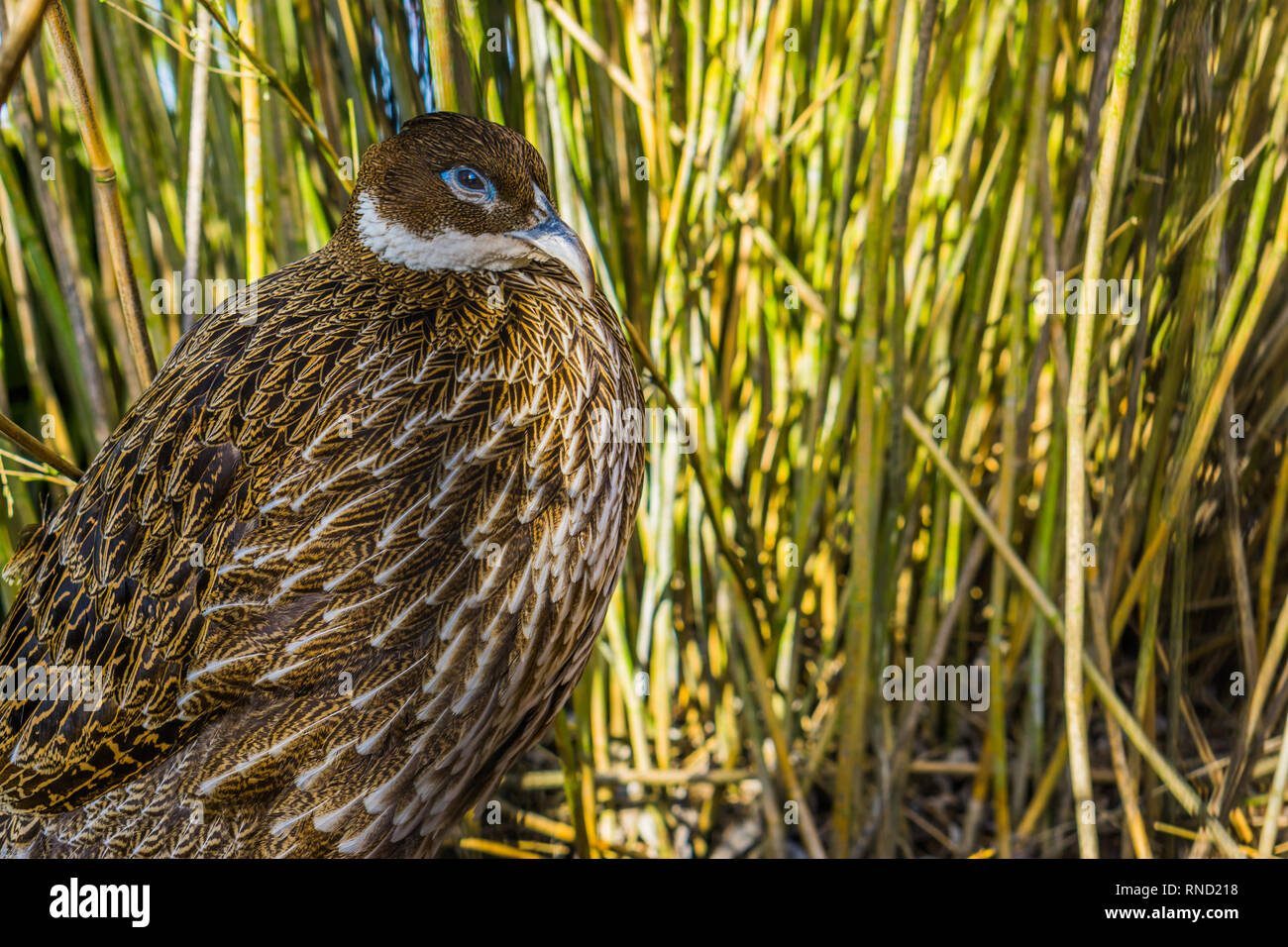

Luckily for us cataloguers, commentator says "For those who like to be specific, the ducks are either Mandarin or Barrow's Golden Eye, while the swans are fine Australian specimens" M/S and nice C/U of a lovely black swan eating bread and gliding along. M/S of a man preparing food on a wooden box table C/U of the food it looks like he is chopping meat which he puts in an oblong feeding tray, he adds some grapes and carries the three trays towards the pheasant enclosure.

C/U of a Himalayan Monal pheasant walking about beautiful colours of red-gold and green-black with a little topknot on its head. M/S of Mrs W getting into a large cage she holds a pine branch towards a Golden Pheasant C/U as she kneels down and tries to coax the bird towards her - the bird flutters and pecks sharply at her arm! (Youch! as Pete Smith would say.) M/Ss of a Silver Pheasant walking about with two female pheasants nice C/Us as he flutters his wings. The next time you are at the Zoo, take a walk over to the Red Panda Forest! There you will find the Himalayan Monal and Azure Winged Magpie mixed species exhibit across from the Red Pandas.M/S and C/Us of a Reeve Pheasant, "like the others, also from China" says the commentator - beautiful colouring in his golden feathers outlined in black. They are the national bird of Nepal and are native to Asia more specifically the Himalayas from eastern Afghanistan to Bhutan, including southern Tibet and northeast India. The Himalayan Monal is considered endangered and their numbers continue to slowly decrease due to a loss of habitat and hunting of the males for their crests. This helps keepers to weigh the birds or easily transport the birds for veterinary exams without having to enter the exhibits with nets and create a stressful situation. This is because the Zoo’s Monals participate in a crate training program where they voluntarily enter a crate for a food reward. In some of the pictures you might notice a crate in the background.

He also loves to spend a lot of his time digging around the exhibit a natural behavior expressed when foraging for food.

#HIMALAYAN MONAL PHEASANT FEMALE FULL#
Our male is full of personality! He enjoys chasing keepers when they walk away, but if the keeper turns around and looks at him, he’ll completely stop and look away as if he wasn’t doing anything. Our pair came to the Sacramento Zoo from the San Diego Zoo when they were just 7 months old. Our male is a few months shy of 2 years old and still has some juvenile plumage visible. As he matures, his colors slowly start to come in, but it can take up to two years. The male doesn’t start out life with those beautiful colors he actually looks very similar to a female as a youngster. The female has duller, brown colors to help her avoid being seen by predators while she incubates her eggs. Male Himalayan Monals have vibrant colors to attract the females. The slideshow below shows the color changes that males go through as they mature. The Sacramento Zoo houses many birds, but the Himalayan Monal Pheasant, sometimes mistakenly called a peacock or a chicken, is one of the most beautiful birds at the zoo.
#HIMALAYAN MONAL PHEASANT FEMALE MOVIE#
Have you ever seen the Disney-Pixar movie “Up?” While making the film, Pixar came to visit the Sacramento Zoo to take pictures, make sketches and observe the behavior of our Himalayan Monals, In the movie “Up,” Kevin is partially based on our birds! Sponsorship Opportunities/ Corporate Partners.Employee Conservation Contribution Program.


 0 kommentar(er)
0 kommentar(er)
